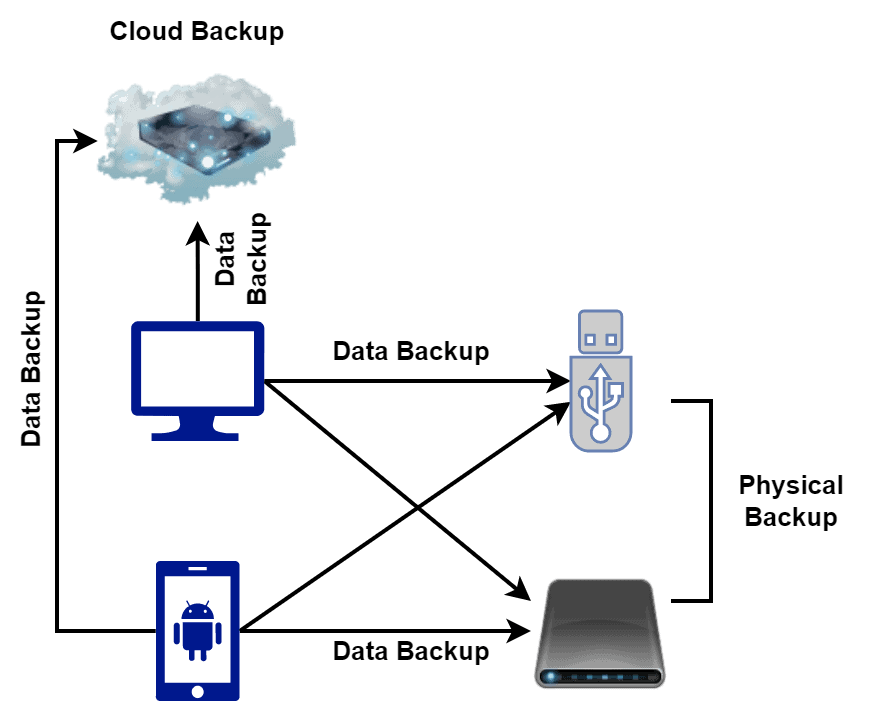1. Overview
In this tutorial, we’ll discuss different types of backups in computing. Finally, we’ll present the advantages and disadvantages of each type of backup method.
2. Introduction to Backup in Computing
In computing, backups refer to copies of data and files that are made in case the original data becomes lost, damaged, or corrupted. Additionally, backups are essential in computing because data loss can occur due to various reasons, such as hardware failure, software errors, viruses, malware, or human error. Losing important data can cause severe consequences, including financial loss, loss of productivity, or even legal implications.
We can create backups using several methods. We can use physical backups like external hard drives or USB drives to store important data. Additionally, cloud backup is another widely used approach. It stores data on remote servers and we can access it over the Internet. Therefore, due to their accessibility and safety, cloud-based backups are quickly gaining in popularity:

It’s essential to take regular backups to prevent data loss. Additionally, the frequency of backups depends on the importance of the data and the frequency of changes made to the data. For critical data, it’s recommended to have multiple backups in different locations. Additionally, we need some backup solutions to ensure data is safe and easily recoverable.
3. Why Do We Need Backup?
Now let’s discuss why we need backup in computing.
The primary reason to take backup is to prevent data loss. Computers are vulnerable to various types of data loss, such as hardware or software failures, human errors, malware attacks, and natural disasters. Therefore, using backups provide a way to restore data in case of the occurrence of such events.
Furthermore, data loss can have severe consequences for businesses, including financial loss, legal issues, and reputational damage. Backups help to ensure business continuity by providing a way to recover data and resume operations after a disaster quickly.
Many industries have regulatory requirements that mandate data backup and retention for a specific period. Additionally, failure to comply with these regulations can result in legal penalties and other consequences. Furthermore, backups can also help with version control by allowing users to roll back to previous versions of a file or document if needed.
Finally, having a backup of important data provides peace of mind, knowing that even if something goes wrong with the primary copy of the data, a backup is available to restore it.
4. Types of Backup
There’re several types of backups in computing: full, incremental, differential, mirror, and cloud backups:

To back up everything contained in a computer or other storage medium, we can use the full backup approach. However, this type of backup can take a long time to complete. Additionally, it provides a complete copy of all the data, making it the most comprehensive backup method.
On the other hand, an incremental backup doesn’t copy any data that has not changed since the last backup was done. Furthermore, this backup method is more efficient than full backups and takes up less space for storage. However, restoring data from incremental backups can be time-consuming since it requires restoring multiple backups.
All the data modifications performed after the last full backup are saved in a differential backup. Furthermore, this backup method is quicker than the full backup but slower than incremental backup. When using a differential backup to restore data, it’s also necessary to restore the most recent full backup in addition to the differential backup.
Moving forward, a mirror backup is a replica of data identical to the original version stored in devices. Specifically, we can use this type of backup for critical systems or data. Furthermore, it requires a high level of storage space.
Finally, a cloud backup stores backup data in a cloud storage service, providing offsite storage and disaster recovery options.
The choice of backup type depends on factors such as the amount of data, backup frequency, storage space availability, and recovery time objectives. Additionally, we can use a combination of backup approaches to provide comprehensive data protection.
5. Advantages
Each type of backup has its advantages, which make it suitable for specific scenarios. Here are some advantages of different types of backups:
6. Disadvantages
Let’s discuss some disadvantages of different types of backups:
7. Conclusion
In this tutorial, we discussed different types of backups in computing. Finally, we presented the advantages and disadvantages of each type of backup method.
While choosing a specific backup approach, we need to consider the specific requirements of the data being backed up, such as the amount of data, backup frequency, and the potential disadvantages of the approach.